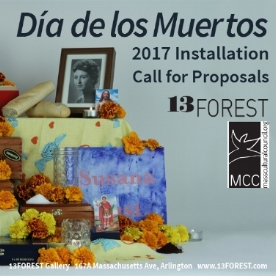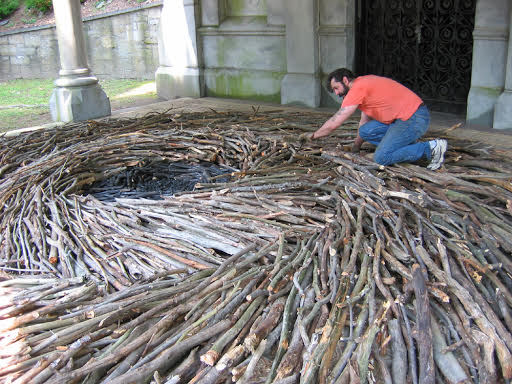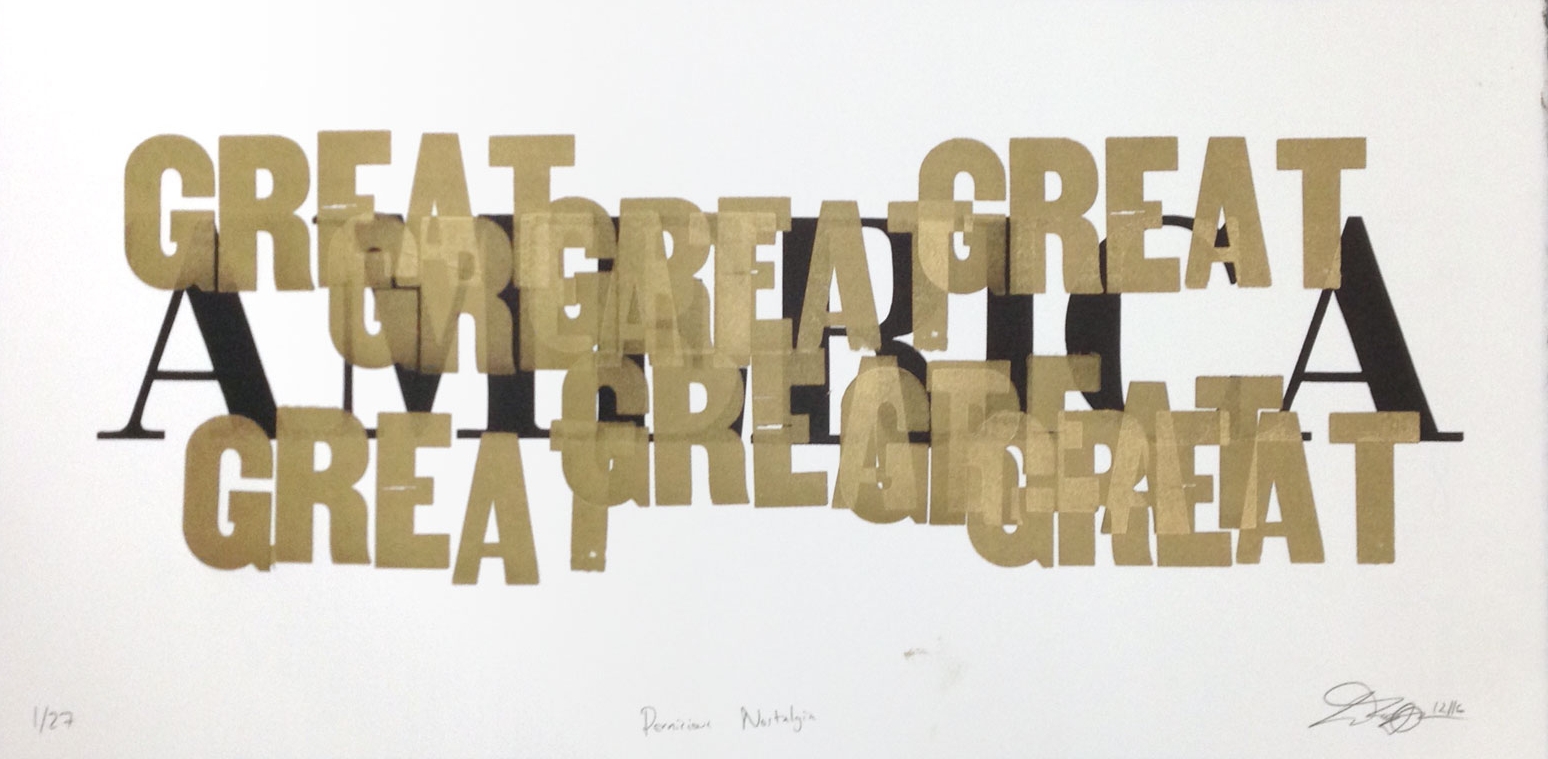On Friday, September 8 at precisely 6 pm the Goethe Institut Boston opened its doors for the public to walk through an installation of 13 large-scale paintings by Wilhelm Neusser. People who knew the artist had been aware of the preparatory work he had undertaken while in residency at MASS MoCA at the beginning of the summer, and then in the solitude of his Somerville studio through the remaining months. But no one had anticipated how the final paintings they were about to see had transformed the Goethe’s interior of ornate ceilings and rococo whiteness into a bright meditation on the spirit of Berlin’s suburban landscape.
ELSEWHERE - provincial perspectives, which will run through September 30, is based on Neusser’s understanding of Berlin as a sexy environment of big politics and avant-garde culture in contrast to its suburbs – the Province – in which buses run irregularly and “the local library is managed by volunteers in their mid-seventies who have trouble with the online catalog.” People are born there, come of age and then move to the city to make their mark on the world, often never to return. With an empathic brush, Neusser defines the Province's melancholia of abandoned swimming pools, vacant hayfields and empty roads without irony or harsh comment. His paintings construct a portrait that is severe, lush and psychologically complex.
During the weeks leading up to his opening at the Goethe Institut, I had visited Neusser in his studio and seen 13 variously sized paper surfaces evolve from an initial state of yellow underpainting to finished works of art. When he said he had been working at the feverish pace of one painting a day I thought he was joking. But he was serious. He also said that when doubt crept in he could sometimes dismiss it by referring back to a cardboard model of the Goethe’s interior that he had built during his residency at MASS MoCA. It was replete with photographic wallpaper of the building’s interior and the dimensions of existing plaster wall frames into which each of his paintings would eventually have to fit. I would leave his studio impressed but nervous over his looming deadline.
After attending the September opening, painter Nicole Duennebier praised her colleague’s preparation and execution as follows: “Wilhelm's perfectly composed paintings fitted within the filigree panels of the Goethe Institut's walls prove the undeniable beauty of difference. Although his paintings are modern in execution and content they look as though they have always lived there.” It is an apt description for the environment Neusser has so painstakingly planned and created.
In terms of stylistic evolution there is something else to be found as well. With this body of large-scale work Neusser has moved the center of what he has previously described as a necessary balance between “the notion of what a landscape really is and reference points to it as a painterly, materialistic appearance on a flat surface.” At the Goethe Neusser's act of painting is recorded onto paper in strokes and thick swipes of paint that had been more typically found in his smaller-scale work. In contrast to the melancholia of the artist's new German landscapes, there is joy in their surfaces, a push/pull between what Neusser depicts and how he has depicted it.
Anyone interested in Neusser, contemporary landscape painting or the Goethe Institut should visit ELSEWHERE - provincial perspectives before it closes on September 30 and before the institute itself closes for renovations through the fall. Neusser has transformed an environment of ornamentation into one of meditation and meaning.
- Jim Kiely
All photos used with permission of the artist.



















